Neutrino particles have been found, due to their non-interacting, almost-vanishing mass, and relativistic nature, as being suitable to hold roles in many phenomena in nature, which have made them attract a large interest among the scientific community. In particular, on the cosmological level, the neutrino is one of the few components whose contribution to the Universe energy budget changes with its expansion, from being part of the radiation to that of the matter density, with implications on the expansion of the background or the growth of large-scale structures. It has also the feature of being abundantly present since the Universe’s early beginning, participating by then to the different phases of its evolution, which allows us to constrain its main properties such as its mass and number of species by any of the known cosmological observables.
- neutrinos
- cosmological observables
- cosmological parameters
Since their introduction as a solution to the deficit of energy budget in beta decay processes [1], neutrino particles attention has grown bigger with the recent discovery of neutrino oscillations in solar and atmospheric measurements as an evidence of having, though very small, a non-zero mass [2]. Besides the implications on cosmology and astrophysics, this discovery had a consequence on the level of the standard model (SM) of particles, as it calls for a modification of the latter.
However, the value of their mass has not been well determined yet, and only higher limits have been derived. Moreover, the sign of the largest mass splitting, the one governing atmospheric transitions, is still unknown, which leaves open two possibilities for the neutrino masses ordering, corresponding to what is called the normal hierarchy, in which the atmospheric splitting is positive, and the inverted hierarchy, in which it is negative [1].
Other unknowns are still present for the neutrino particle, among them the value of a possible CP-violating phase in the neutrino-mixing matrix, and the Dirac or Majorana nature of the neutrino, i.e., whether or not the neutrino and its antiparticles are the same [1].
There are, however, different ways to constrain the absolute total neutrino masses scale, starting from terrestrial or laboratory experiments, where we can use energy and momentum conservation to determine the mass of the quantity involved from their kinematic effects on the electrons produced in the β decay of nuclei. This could be obtained practically from monitoring distortions in the energy spectrum produced using either holmium 163 isotopes, where the decay energy is measured with micro-calorimeters, or by exploiting the single-β decay of molecular tritium [1].
Neutrinos could also be detected when succeeding in observing some astrophysical cataclysmic events, such as supernova explosions or mergers between two compact objects, for instance two neutron stars or a neutron star and a black hole. Such events usually lead to a compression for high-density volumes so that the proton and electrons combine and release neutrinos that carry most of the energy of the collapse [3]. They also play a role in cooling the torus around the central remnant of a massive neutron star, a black hole, or the nucleosynthesis of heavy nuclei through r-processes in SN remnants. If the event is monitored in its whole duration, it is possible to obtain information on the neutrino velocity since its energy could be measured, hence its mass.
On the cosmological level, the neutrino is one of the few components whose contribution to the energy budget changes its contribution with the Universe’s expansion, from being part of the radiation to that of the matter density, with implications on the expansion of the background or the growth of large-scale structures [4]. It has also the feature of being abundantly present since the Universe’s early beginning, participating by then to the different phases of its evolution, which allows us to constrain it by any of the known cosmological observables, such as the cosmic microwave radiation spectrum (CMB), the imprint left from the early baryonic acoustic oscillations (BAO) on the galaxy’s distribution, the geometric distance from the light curve of the supernova or the more direct growth of structure probes, such as the shear power spectrum from weak-lensed galaxies by matter densities, or the abundance of the clusters or galaxies.
1. Introduction
Since their introduction as a solution to the deficit of energy budget in beta decay processes, neutrino particles attention has grown bigger with the recent discovery of neutrino oscillations in solar and atmospheric measurements as an evidence of having, though very small, a non-zero mass. Besides the implications on cosmology and astrophysics, this discovery had a consequence on the level of the standard model (SM) of particles, as it calls for a modification of the latter. However, the value of their mass has not been well determined yet, and only higher limits have been derived. Moreover, the sign of the largest mass splitting, the one governing atmospheric transitions, is still unknown, which leaves open two possibilities for the neutrino masses ordering, corresponding to what is called the normal hierarchy, in which the atmospheric splitting is positive, and the inverted hierarchy, in which it is negative. Other unknowns are still present for the neutrino particle, among them the value of a possible CP-violating phase in the neutrino-mixing matrix, and the Dirac or Majorana nature of the neutrino, i.e., whether or not the neutrino and its antiparticles are the same. There are, however, different ways to constrain the absolute total neutrino masses scale, starting from terrestrial or laboratory experiments, where the researchers can use energy and momentum conservation to determine the mass of the quantity involved from their kinematic effects on the electrons produced in the β decay of nuclei. This could be obtained practically from monitoring distortions in the energy spectrum produced using either holmium 163 isotopes, where the decay energy is measured with micro-calorimeters, or by exploiting the single-β decay of molecular tritium.
Neutrinos could also be detected when succeeding in observing some astrophysical cataclysmic events, such as supernova explosions or mergers between two compact objects, for instance two neutron stars or a neutron star and a black hole. Such events usually lead to a compression for high-density volumes so that the proton and electrons combine and release neutrinos that carry most of the energy of the collapse. They also play a role in cooling the torus around the central remnant of a massive neutron star, a black hole, or the nucleosynthesis of heavy nuclei through r-processes in SN remnants. If the event is monitored in its whole duration, it is possible to obtain information on the neutrino velocity since its energy could be measured, hence its mass.
On the cosmological level, the neutrino is one of the few components whose contribution to the energy budget changes its contribution with the Universe’s expansion, from being part of the radiation to that of the matter density, with implications on the expansion of the background or the growth of large-scale structures. It has also the feature of being abundantly present since the Universe’s early beginning, participating by then to the different phases of its evolution, which allows us to constrain it by any of the known cosmological observables, such as the cosmic microwave radiation spectrum (CMB), the imprint left from the early baryonic acoustic oscillations (BAO) on the galaxy’s distribution, the geometric distance from the light curve of the supernova or the more direct growth of structure probes, such as the shear power spectrum from weak-lensed galaxies by matter densities, or the abundance of the clusters or galaxies.
2. Neutrino Effects on the CMB Power Spectrum
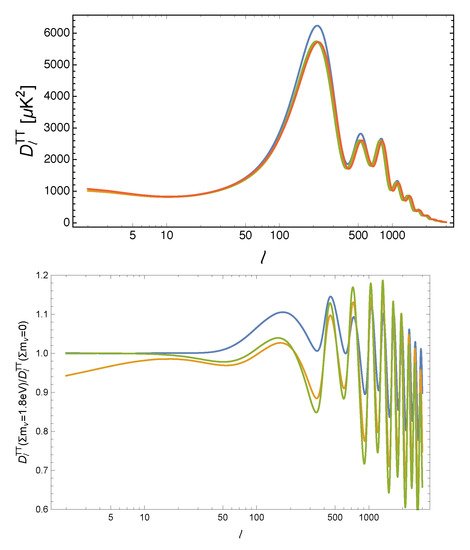
32. Effects of Neutrino on Large-Scale Structure Formation
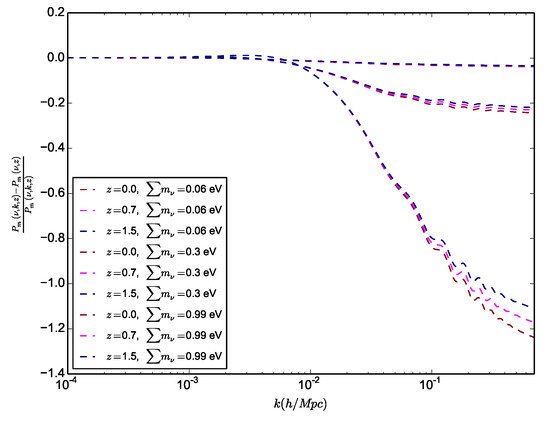
43. Neutrinos Mass and Number Constraints from Cosmological Observables
ThWe researchers hhave seen the neutrino mass and number of species impact on cosmological observables and the possibility to use them to constrain neutrino properties. However, being involved in most of the physical processes, neutrinos effect could degenerate with other cosmological parameters, such as, for example, the matter density parameter’s impact on the growth of structure or the universe’s expansion, along with the Hubble constant. This could weaken the constraints from a single probe unless the researchers we combine different ones to break the degeneracies and tighten by then the bounds on the neutrino properties. As an example, Di Valentino (2021) [6][10], using the latest determinations of the growth rate parameter, along with CMB and a BAO measurements from galaxy clustering, set the upper limit to ∑ m ν < 0.09 eV at a 95% confidence level.
However, with the current observations, even if thwe researchers ccombine most of the available datasets, there will still be room for more than 10% inaccuracy on its mass or number of species.
Below, thwe researchers ccompile most of the current upper bounds in one Figure 35 to better picture the status and compare the capabilities of the different probes or their combinations in constraining properties on the neutrino masses.
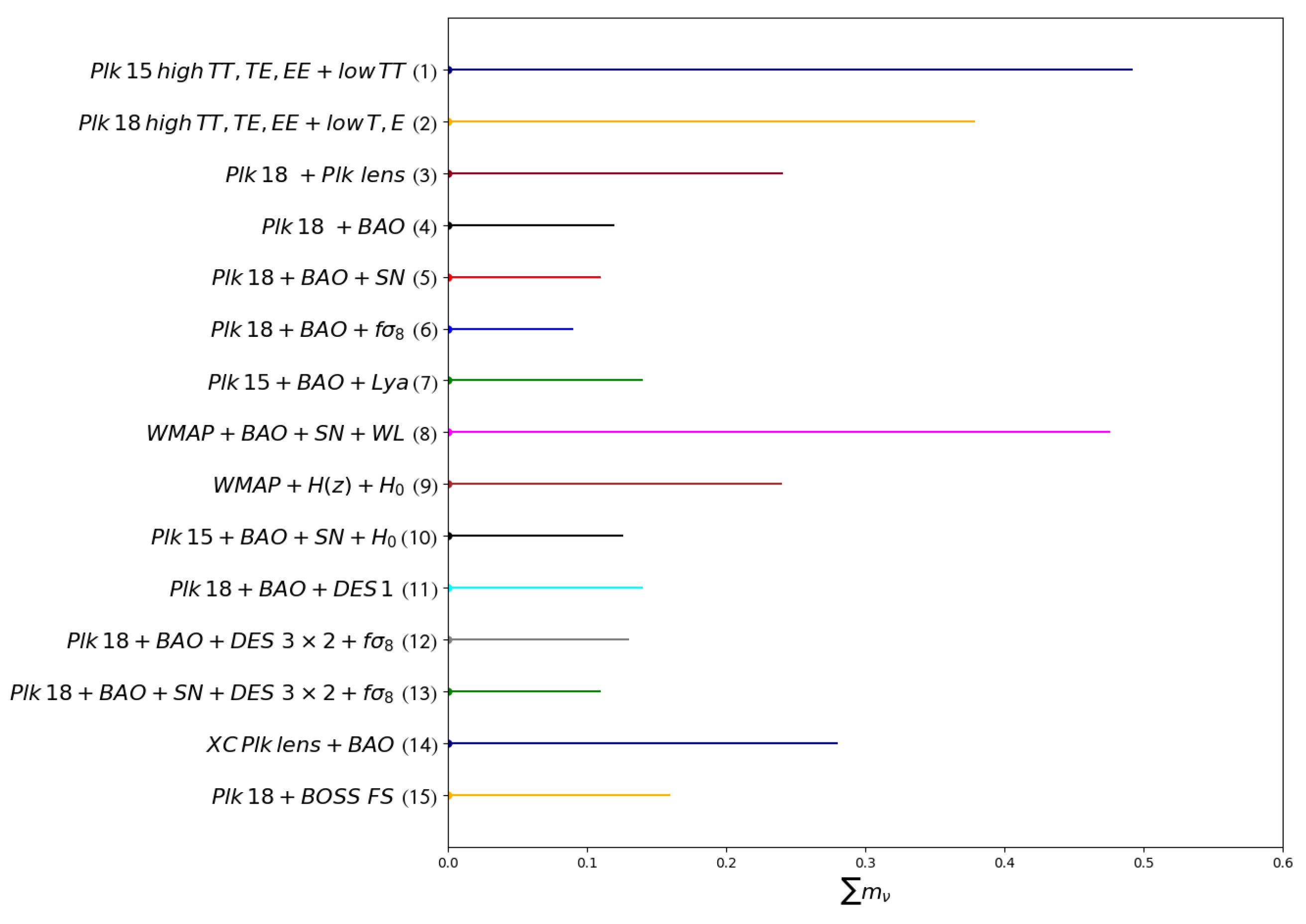
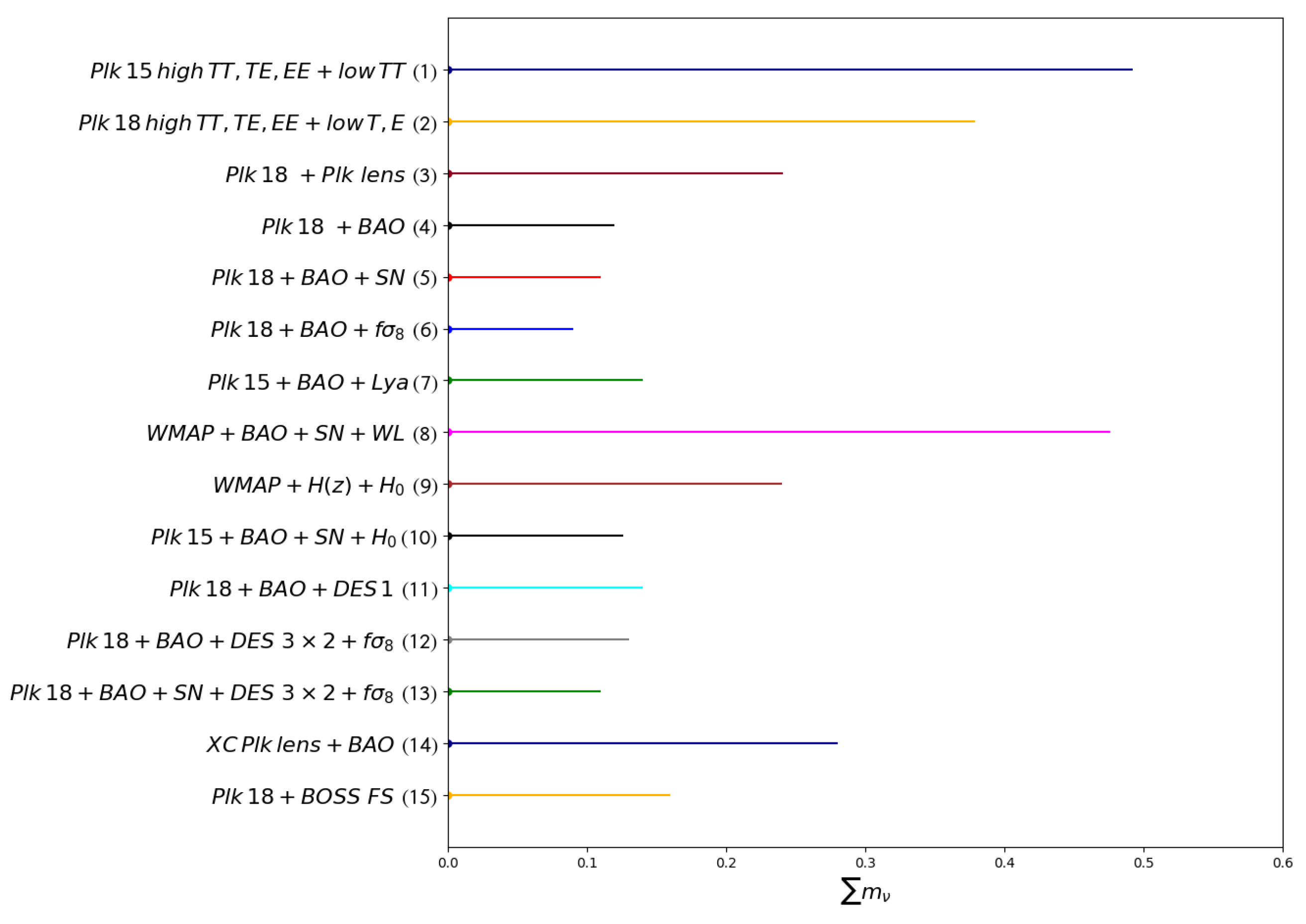
Figure 35. Total neutrino masses upper bounds at the 95% confidence level from different combinations of currently available cosmological probes.
Total neutrino masses upper bounds at the 95% confidence level from different combinations of currently available cosmological probes (see references here)
That is why the next generation of surveys, such as Euclid [7][11], LSST-Rubin [8][12], WFIRST-Roman [9][13], SKA [10][14], CMB-S4 [11][15], or DESI [12][16], with one or even two orders of magnitude higher in terms of the density of the observations or depth in the redshift, are necessary to reach the evidence for the mass detection of the number of species beyond the five σ required to claim a discovery. However, this also might not be sufficient unless thwe researchers include further surveys that are able to constrain the last degeneracy that the upcoming surveys could not break, i.e., the optical depth, which degenerate with the amplitude of the power spectrum or the polarization present in the corresponding spectrum from CMB and, that by using deeper redshift surveys, are able to reach the epoch of reionization, such as Litebird [13][17] or CORE [14][18], and are also spanning most of the fraction of the sky to limit to a the maximum the cosmic variance, with the latter being one of the main limits to the use of large-scale modes in different-measured power spectrums to further constrain cosmological parameters as well as neutrino masses.
Below, thwe researchers ccompile most of the forescasted bounds in one Figure 46 to better picture the status and capabilities of the upcoming probes and their combinations in constraining properties on the neutrino mass.
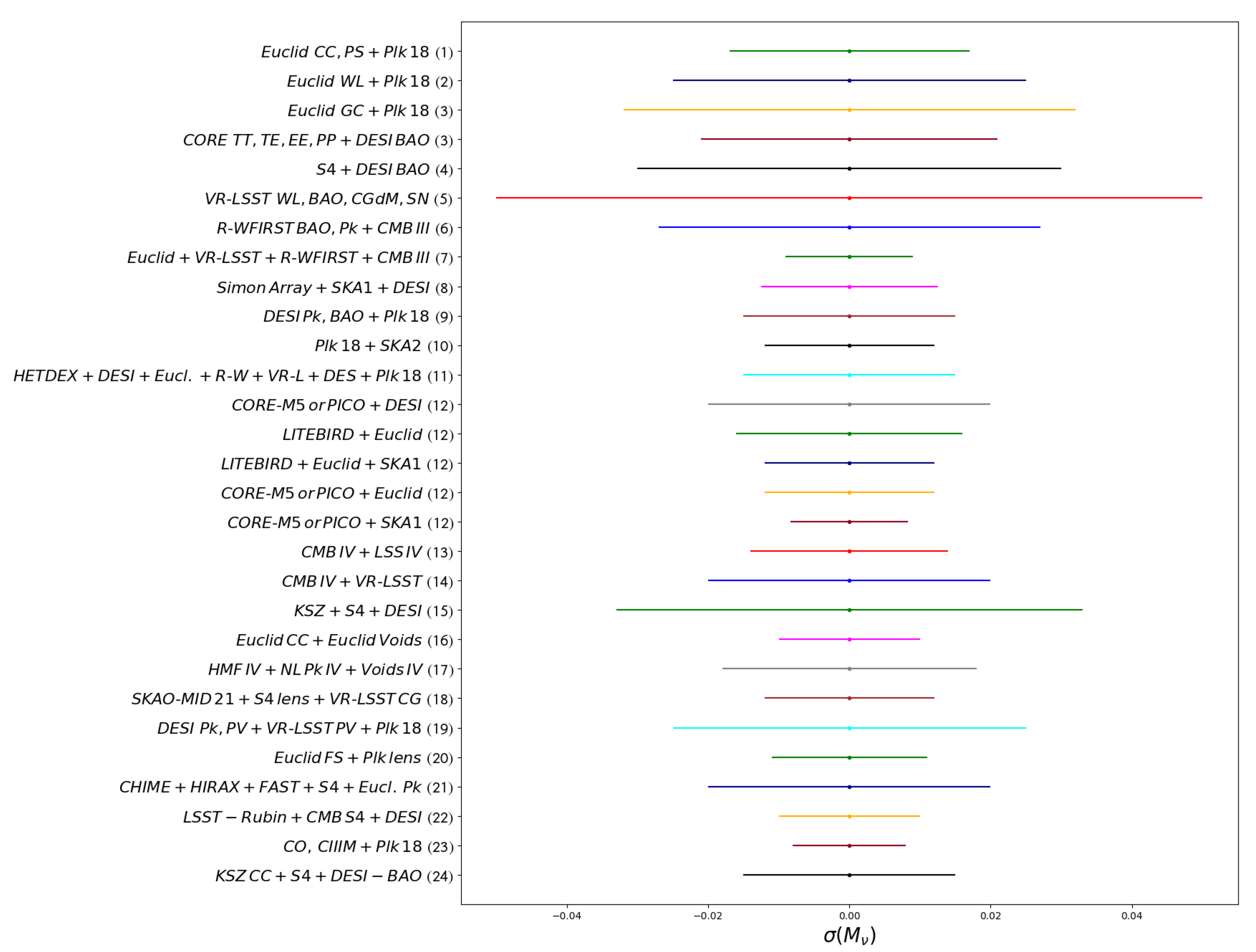

Figure 46. Neutrino uncertainty mass bounds at 68% confidence level from different combinations of upcoming cosmological experiments.
Neutrino uncertainty mass bounds at 68% confidence level from different combinations of upcoming cosmological experiments (see references here).
Still, these will act on the total mass of the neutrino species while the hierarchy or the individual mass of each of the neutrino’s flavors will have to wait until surveys with a capacity beyond Stage IV to be detected, or else, combining upcoming surveys with future terrestrial and astrophysical experiments to limit the allowed space of variation of neutrino masses [15][19].
